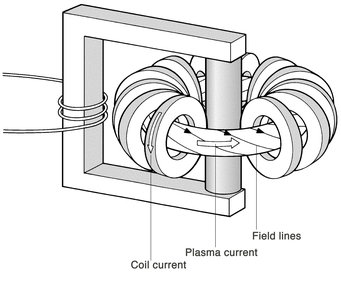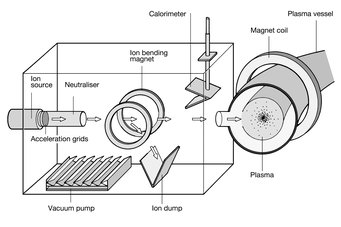Plasma heating

Current heating
When an electric current is passed through the electrical conductive plasma, it generates heat in the plasma through its resistance like a cooker hotplate. As this resistance decreases with increasing temperature, this method is only suitable for initial heating.

High-frequency heating – the "microwave oven" principle
When electromagnetic waves of appropriate frequency are beamed into the plasma, the plasma particles absorb energy from the field of the wave and transfer it to the other particles through collisions. The circular motions of the ions and electrons around the magnetic field lines afford suitable resonances.
The orbital frequency of the ions is between 10 and 100 megahertz, that of the lighter electrons between 60 and 150 gigahertz.

Neutral particle heating
Particles with high kinetic energy that are injected into the plasma transfer their energy to the plasma particles through collisions and heat them: In a neutral particle injector first the ions are produced in an ion source and then accelerated by an electric field. To allow the fast ions to penetrate into the plasma without hindrance from the magnetic field cage, first they have to be re-neutralised.
The neutralised particles shoot into the plasma and transfer their energy to the plasma particles through collisions. (On the development of the ITER neutral beam heating >>)


